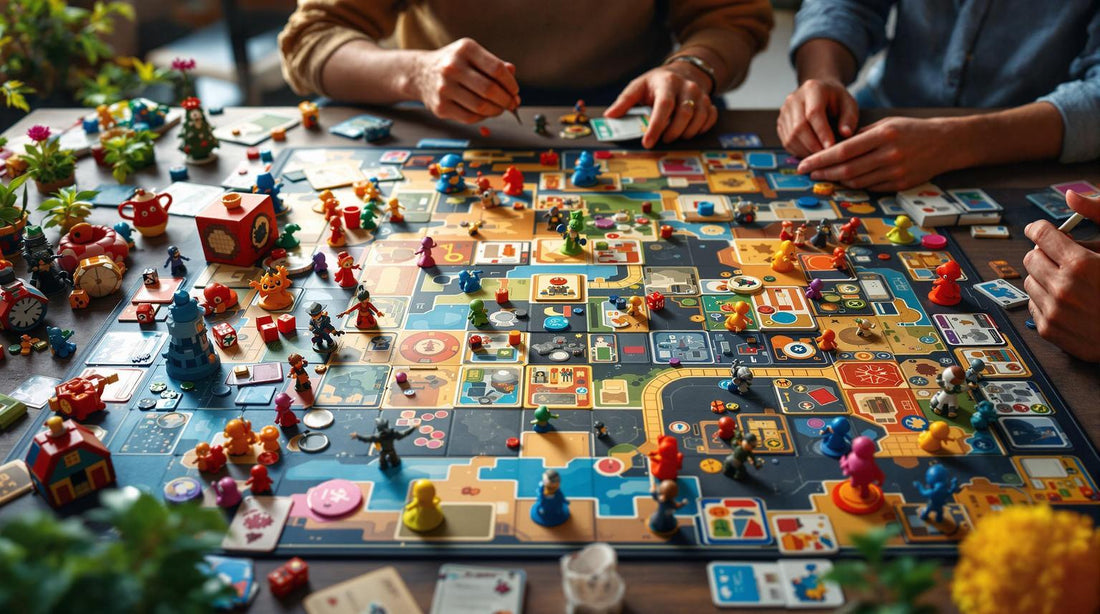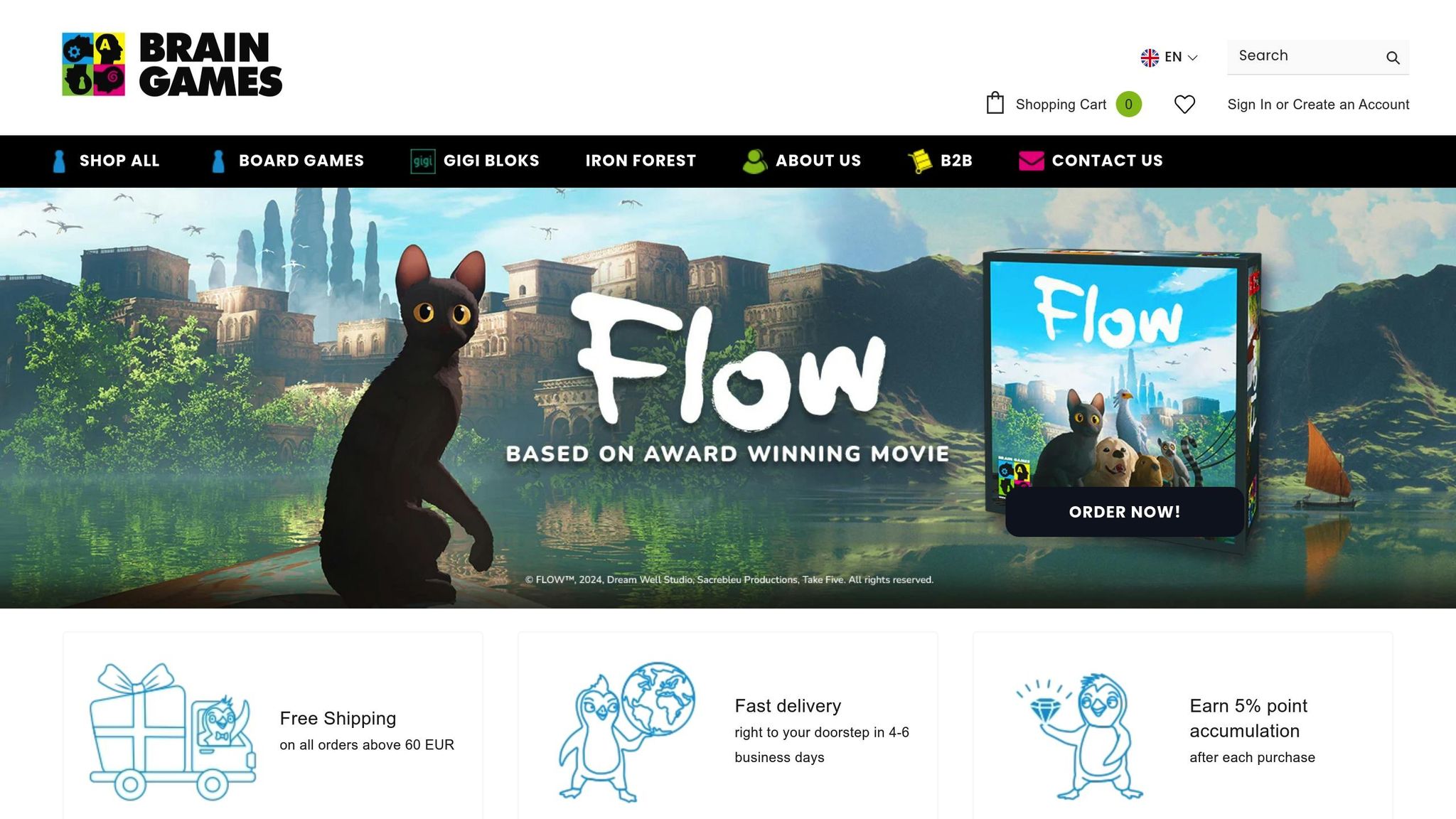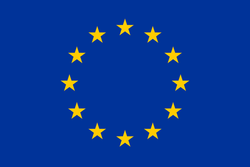Discover the Best Board Games for Every Player

How to Plan Mini-Games for Game Events
Mini-games are short, interactive activities designed to boost engagement at events like board game launches. They encourage participation, showcase your brand, and create a fun atmosphere. Here's a quick guide to planning them:
- Choose Games Based on Event Size: Small events (<30 attendees) work well with simple games like cookie decorating. Larger events (100+) can feature games like Life-Size Pacman or tournaments.
- Understand Your Audience: Use surveys and live polls to tailor games to skill levels and energy.
- Plan a Timeline: Schedule games during peak times, with durations ranging from 5-45 minutes depending on the activity.
- Set Up the Venue: Organize spaces with clear pathways, game stations, and essential materials like score sheets and timers.
- Encourage Participation: Use clear instructions, mix competitive and casual games, and offer breaks to keep attendees engaged.
- Gather Feedback: Use surveys and social media hashtags to measure success and improve future events.
Mini-games aren't just fun - they can increase engagement by up to 90% and provide valuable attendee insights.
Planning Your Mini-Games
Know Your Audience
Understanding your audience is key to making your mini-games a hit. Use tools like pre-event surveys and live polls to gather feedback. Research shows that interactive polling can boost engagement significantly.
Here’s how to tailor your games to your audience:
- Use Live Polling: Real-time feedback tools can help you identify preferences and fine-tune your games on the spot.
- Watch Energy Levels: Pay attention to how energized attendees are and adjust the complexity of your games accordingly.
- Account for Skill Levels: Include options that work for both beginners and more experienced participants to keep everyone involved.
Armed with this knowledge, you can pick games that truly resonate with your audience.
Choose the Best Games
The right mini-game depends on your event’s size, schedule, and theme. Here’s a quick guide to help you decide:
| Event Size | Recommended Mini-Games | Time Allocation |
|---|---|---|
| Small (<30) | Cookie Decorating, Board Games | 15‑20 minutes |
| Medium (30‑100) | Scavenger Hunts, Giant Chess | 20‑30 minutes |
| Large (100+) | Life-Size Pacman, Tournament Brackets | 30‑45 minutes |
For events tied to strategy launches, consider decision-making games to reflect the event’s focus. Once you’ve chosen your games, create a timeline to ensure everything runs smoothly.
Build Your Timeline
A well-planned timeline can make or break your mini-games. Here’s how to organize it effectively:
-
Pre-Event Planning
- Schedule games during peak attendance times and plan well in advance.
-
Day-of Schedule
- Spread out the games evenly throughout the event while keeping some flexibility.
-
Game Duration Management
- Icebreakers: Plan for 5‑10 minutes.
- Main Activities: Allocate 15‑20 minutes.
- Tournament Games: These can run 30‑45 minutes, including breaks.
Don’t forget to promote your mini-games on social media about two weeks before the event to build anticipation!
Decision Making Games - Team Building Exercise
Venue Setup Guide
Set up your venue to ensure smooth gameplay and an enjoyable experience for participants. Follow your event timeline to stay organized.
Room Layout
Design the space with a clear focus. Position the main attraction along one wall and create separate areas for each game. Leave enough room for movement and maintain clear pathways to avoid crowding.
Game Materials Checklist
Being well-prepared keeps things running smoothly. Here's what you'll need:
- Essential Equipment: Main console with joystick(s) or buttons for digital games, HDMI cables, power supplies, backup USB drives, and extra controllers.
- Support Materials: Score sheets, timers, rule cards, spare game pieces, a first aid kit, and cleaning supplies.
Having everything ready ensures a hassle-free experience. You can also improve your setup by adding games from the Brain Games collection.
Brain Games Selection

Add a fun and engaging touch with games from Brain Games. Here are a few popular picks:
- ICECOOL (€29.95)
- TEAM3 Pink/Green (€22.95)
- Karakum (€11.95)
- Spellbloom (€34.95)
Place these games in well-lit areas with comfortable seating to encourage players to join in.
sbb-itb-1ed942f
Running Mini-Games
Game Management Tips
To manage mini-games effectively, start by clearly explaining the rules. Use visual aids and run a quick example round to ensure everyone understands how to play.
Set up a schedule board that displays key details like the current game, the next start time, the number of players needed, and the difficulty level. This keeps everyone informed and ready to join in.
Keep the games moving smoothly by setting time limits. For tournament-style games, a visible timer can help maintain focus and ensure no single game drags on too long.
Once the structure is in place, shift your attention to getting everyone involved and making the experience enjoyable.
Getting Everyone Involved
After organizing the games, focus on encouraging participation from all attendees. A mix of competitive and casual play can work wonders. For instance, you can offer daily challenges, form teams with varying skill levels, and gradually make the games more challenging as players get the hang of them.
Don't forget to include regular breaks. These pauses not only prevent burnout but also create opportunities for participants to socialize and share tips, adding a sense of camaraderie to the event.
Solving Common Problems
| Problem | Solution | Prevention |
|---|---|---|
| Rule Disputes | Assign a referee or organizer to make final calls | Display written rules in visible locations |
| Uneven Participation | Adjust groups and address participation gaps | Set clear expectations and promote balanced play |
| Technical Issues | Have backup games ready | Test all equipment beforehand |
| Player Fatigue | Schedule short breaks | Offer refreshments and comfortable seating |
For rule disputes, remember Gary Gygax's wise words:
"It is the spirit of the game, not the letter of the rules which is important."
Keep an eye on how engaged participants are. If you notice anyone losing interest or getting frustrated, consider tweaking the game's difficulty or length based on their feedback. This adaptability can help maintain a fun and immersive experience for everyone.
After-Event Analysis
Once the games are over, it's time to review their impact and gather insights to make future events even better.
Getting Attendee Feedback
Collecting feedback is crucial. Use tools like surveys, exit polls, and even a dedicated event hashtag to hear what attendees think. Send out short post-event surveys within 24 hours, asking about specific aspects of the mini-games - like how challenging they were, how long they took, and whether people enjoyed them. A custom hashtag (e.g., #StrategyGameFest2025) can help you track online discussions and gather unfiltered opinions. For instant feedback, set up exit polls at game stations using mobile event apps. To encourage more responses, offer small incentives like exclusive game cards. The insights you gather will help fine-tune your future events.
Measuring Results
To understand how well your mini-games performed, track key engagement metrics. Here's a breakdown:
| Metric | Description | Why It Matters |
|---|---|---|
| Participation Rate | Number of active players vs. total attendees | Shows how engaging the event was |
| Game Completion | Percentage of players finishing each game | Indicates if the games were balanced |
| Session Duration | Average time spent per mini-game | Helps plan better schedules |
| Social Engagement | Hashtag mentions and shared content | Tracks buzz and event reach |
Research shows that engaged attendees are 33% more likely to help events hit their sales and marketing goals.
"Effective event feedback not only helps in identifying immediate issues but also offers a roadmap for long-term improvements." - Dropthought
Making Improvements
Dive into the feedback to spot recurring themes and unexpected insights. Use this information to adjust game mechanics, scheduling, and support materials. When you make changes, explain your reasoning to attendees. Roblox Developer Relations emphasizes this approach:
"Always have a reason for your decisions, and always be sure that you show that you are looking at what players want. Don't give dodgy responses to players who are trying to help you improve your game, or you risk having backlash and dissent among players."
Focus on these areas for improvement:
- Game Mechanics: Tweak rules and difficulty levels based on how many players completed the games.
- Event Flow: Refine schedules and transitions to keep things running smoothly.
- Player Experience: Improve engagement by providing clearer instructions and better support.
Keep track of what works, document successful changes, and continue collecting community feedback. This way, your mini-game events can keep evolving and getting better over time.
Conclusion: Mini-Game Planning Tips
Planning Steps Review
To plan a successful mini-game, focus on setting clear goals, ensuring measurable outcomes, and using interactive scoreboards. Keep the games simple and engaging to encourage repeat participation, and limit their duration to 90 days or less. These strategies align with the broader objective of connecting games to your event's goals.
Mini-Game Impact
Mini-games can significantly enhance event performance and deliver measurable results. For instance, Fleck Sales Company managed to cut return beer rates by 35%, saving close to $600,000. Mini-games are particularly effective in these areas:
| Impact Area | Benefit | Implementation Tip |
|---|---|---|
| Team Building | Encourages shared goals and accountability | Tie rewards to team achievements |
| Performance | Sharpens focus on critical metrics | Address specific weaknesses or opportunities |
| Culture | Builds engagement and a winning mindset | Incorporate regular recognition elements |
These games are not just fun - they’re functional tools for driving real results.
Brain Games Resources
For more ideas and a wide range of mini-game options, check out Brain Games at Brain-Games.com or Brain-Games.lv/en/. As Rich Armstrong and Steve Baker explain:
"MiniGames™ are a powerful way to describe short-term, self-funding incentive plans that will make a huge impact on your organization in 90 days or less. They are designed to affect a change, reinforce business training, build teamwork, and develop a winning attitude - all of which lead to success for both your company and your people."






